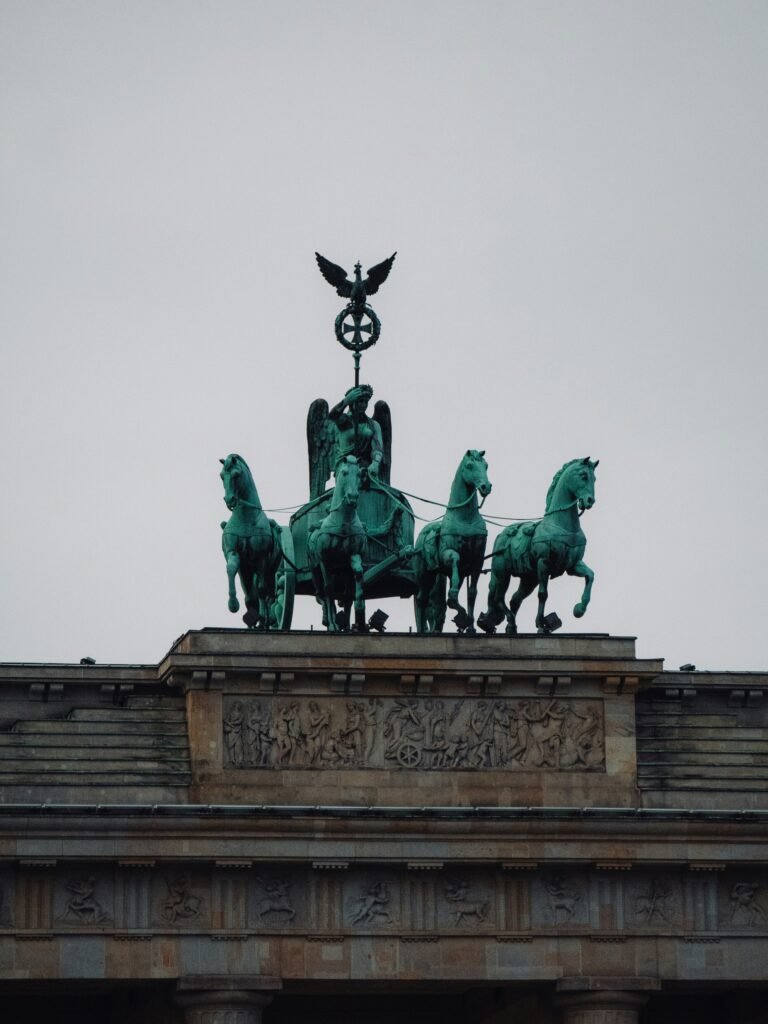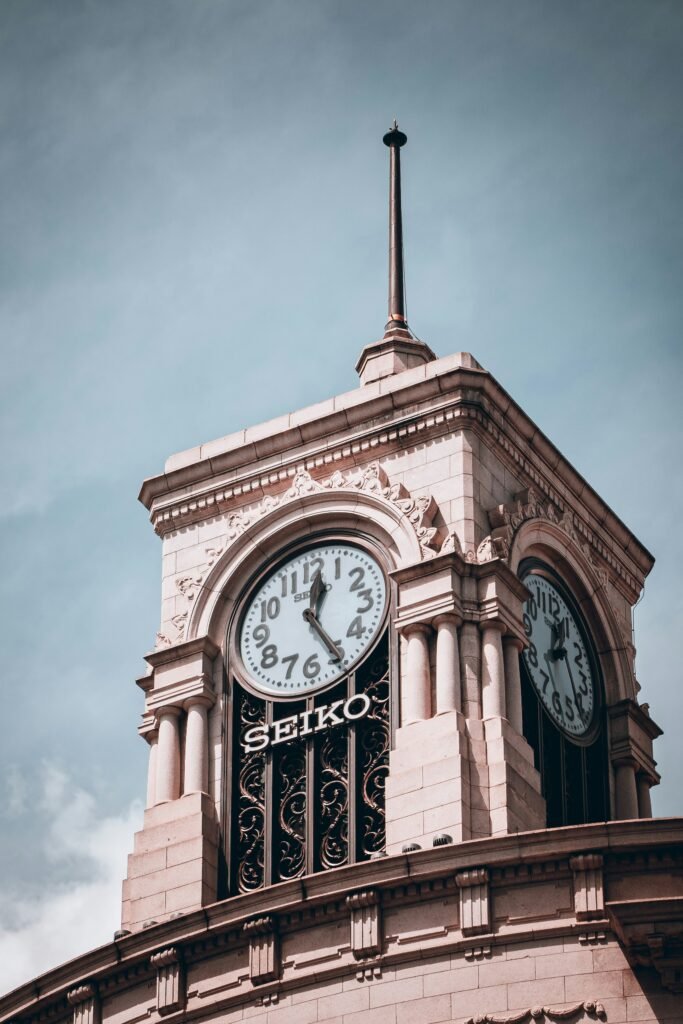Welcome to an inspiring exploration of the fusion of art and functionality in clock design! In this article, you will discover how designers are incorporating artistic elements into the creation of clocks, transforming them from mere time-telling devices into stunning pieces of art that also serve a practical purpose. From intricate designs to unique materials, the world of clock design is evolving to blend aesthetics with functionality in exciting ways. Join us on this journey as we delve into the creative process behind these innovative timepieces. Have you ever wondered about the intricate relationship between art and functionality in clock design? Clocks are not only practical timekeeping devices but can also be exquisite works of art that enhance your living space. Let’s delve into the fascinating world of clock design and explore how artistic elements are seamlessly integrated with functionality to create stunning timepieces that not only tell time but also elevate the aesthetic appeal of your home.

This image is property of images.unsplash.com.
The Evolution of Clock Design
Clocks have been an integral part of human civilization for centuries, evolving from sundials and water clocks to the intricate and beautifully crafted timepieces we see today. The fusion of art and functionality in clock design has a rich history that spans across different cultures and time periods. From ornate grandfather clocks to sleek and modern digital designs, clocks have always been a reflection of the art and craftsmanship of their time.
Ancient Clocks: From Sundials to Water Clocks
Ancient civilizations such as the Egyptians, Greeks, and Romans used sundials to track the movement of the sun and tell time during the day. These early timekeeping devices were not only functional but also served as symbols of power and prestige. Water clocks, which used the flow of water to measure time, were also popular in ancient times and combined practicality with artistic design.
Medieval Clock Towers and Astronomical Clocks
During the Middle Ages, clock towers became prominent features of cities and towns, not only serving as timekeeping devices but also as symbols of civic pride and architectural beauty. The development of astronomical clocks, such as the famous Prague Astronomical Clock, integrated intricate astronomical features with artistic design, showcasing the fusion of science and art in clockmaking.
Artistic Elements in Clock Design
Clock design has come a long way from its humble beginnings, with contemporary designers pushing the boundaries of creativity and innovation to create unique and visually stunning timepieces. Artistic elements play a crucial role in the design of modern clocks, adding a touch of sophistication and elegance to these everyday objects.
Materials and Finishes
Clock designers often experiment with a wide range of materials and finishes to create clocks that are not only functional but also visually appealing. From elegant wood finishes to sleek metal frames, the choice of materials can greatly influence the overall aesthetic of a clock. Glass, acrylic, and ceramic are also popular choices for clock design, adding a contemporary touch to traditional timepieces.
Colors and Patterns
The use of colors and patterns can transform a simple clock into a striking piece of artwork. Clock designers often play with bold and vibrant colors, intricate patterns, and geometric shapes to create visually dynamic timepieces that command attention. Whether it’s a minimalist clock with a monochromatic color scheme or a retro-inspired design with bold colors and patterns, the use of color and pattern in clock design can evoke different moods and styles.
Texture and Dimension
Texture and dimension are key elements in creating clocks that are not only visually appealing but also tactile and engaging. Clock designers often incorporate textured surfaces, three-dimensional elements, and sculptural details to add depth and complexity to their designs. From sleek and smooth finishes to rough and tactile surfaces, texture and dimension can elevate the overall aesthetic of a clock and make it a captivating focal point in any room.

This image is property of images.unsplash.com.
Functional Features in Clock Design
While artistic elements play a significant role in clock design, functionality remains at the core of every timepiece. Clock designers carefully balance form and function to create clocks that not only look beautiful but also perform their primary function of telling time accurately and reliably. From traditional analog clocks to high-tech digital designs, functional features are essential components of modern clocks.
Timekeeping Mechanisms
The mechanism used to keep time is a critical aspect of clock design, with a wide range of options available to designers. Analog clocks use mechanical movements such as pendulums and gears to keep time, while digital clocks rely on electronic components and quartz crystals for accuracy. Hybrid clocks that combine analog and digital elements are also popular, offering the best of both worlds in terms of traditional charm and modern precision.
Display Options
Clock designers have endless possibilities when it comes to displaying time, from classic clock faces with hour and minute hands to innovative digital displays with customizable features. LED displays, flip clocks, and projection clocks are just a few examples of the diverse display options available to designers. The choice of display not only affects the functionality of a clock but also contributes to its overall visual appeal and user experience.
Additional Features
In addition to telling time, modern clocks often come with a range of additional features that enhance their functionality and versatility. Alarm clocks, world clocks, weather stations, and night lights are just a few examples of the many features that designers can incorporate into their clock designs. These additional features not only add practical value to a clock but also cater to the diverse needs and preferences of consumers.
The Impact of Technology on Clock Design
Advancements in technology have revolutionized the world of clock design, offering designers new tools and techniques to push the boundaries of creativity and innovation. From smart clocks with integrated Wi-Fi connectivity to environmentally friendly clocks with solar-powered mechanisms, technology has opened up a whole new world of possibilities for clock designers.
Smart Clocks
Smart clocks combine cutting-edge technology with sleek design to offer users a range of advanced features and functionalities. Wi-Fi connectivity, voice control, app integration, and smart home compatibility are just a few examples of the many features that smart clocks can offer. These high-tech timepieces not only tell time but also serve as multifunctional devices that can sync with your calendar, play music, and even control your smart home devices.
Sustainable Clocks
As environmental awareness grows, designers are turning to sustainable materials and energy-efficient mechanisms to create eco-friendly clocks. Solar-powered clocks, which harness the power of sunlight to keep time, are a popular choice for environmentally conscious consumers. Recycled materials, energy-saving components, and minimalist designs that reduce waste and energy consumption are also key features of sustainable clock design.
Innovative Designs
Technology has enabled designers to explore new forms, shapes, and functions in clock design, leading to the creation of innovative and unconventional timepieces. Floating clocks, levitating clocks, and kinetic clocks are just a few examples of the unique and imaginative designs that technology has made possible. These innovative clocks challenge traditional notions of timekeeping and redefine the boundaries of art and functionality in clock design.

This image is property of images.unsplash.com.
Finding the Perfect Clock for Your Home
With so many options available, finding the perfect clock for your home can be a fun and rewarding experience. Whether you prefer a classic analog clock with a vintage charm or a sleek digital design with modern flair, there is a clock out there to suit every style and preference. Here are some tips to help you find the perfect clock for your home:
Consider Your Space
When choosing a clock for your home, consider the size and layout of the room where you plan to display it. A large wall clock can make a bold statement in a spacious living room or dining area, while a small mantel clock can add a touch of elegance to a bedside table or desk. Make sure to measure the available space and choose a clock that fits comfortably within the room without overwhelming the other decor.
Think About Your Style
Clocks come in a wide range of styles, from traditional to contemporary, so it’s important to choose a design that complements your existing decor and personal style. If your home is decorated in a minimalist and modern aesthetic, a sleek and abstract clock with clean lines and a monochromatic color scheme may be the perfect choice. On the other hand, if you prefer a more classic and ornate look, a vintage-inspired clock with intricate details and a warm wood finish could be more to your liking.
Focus on Functionality
While aesthetics are important, don’t forget to consider the functionality of the clock as well. Think about how you will use the clock in your daily life and choose one that meets your needs. If you need an alarm clock to wake you up in the morning, look for a model with a reliable alarm function and easy-to-read display. If you want a clock that also serves as a decorative piece, opt for a design that is both visually appealing and practical in its timekeeping capabilities.
Conclusion
Clock design is a fascinating intersection of art and functionality, where creativity and innovation come together to create timepieces that are not only practical but also visually stunning. From ancient sundials to contemporary smart clocks, the evolution of clock design reflects the changing tastes and technologies of each era. By exploring the fusion of artistic elements with functional features in clock design, we gain a deeper appreciation for the craftsmanship and creativity that goes into creating these essential and beautiful objects that adorn our homes.
